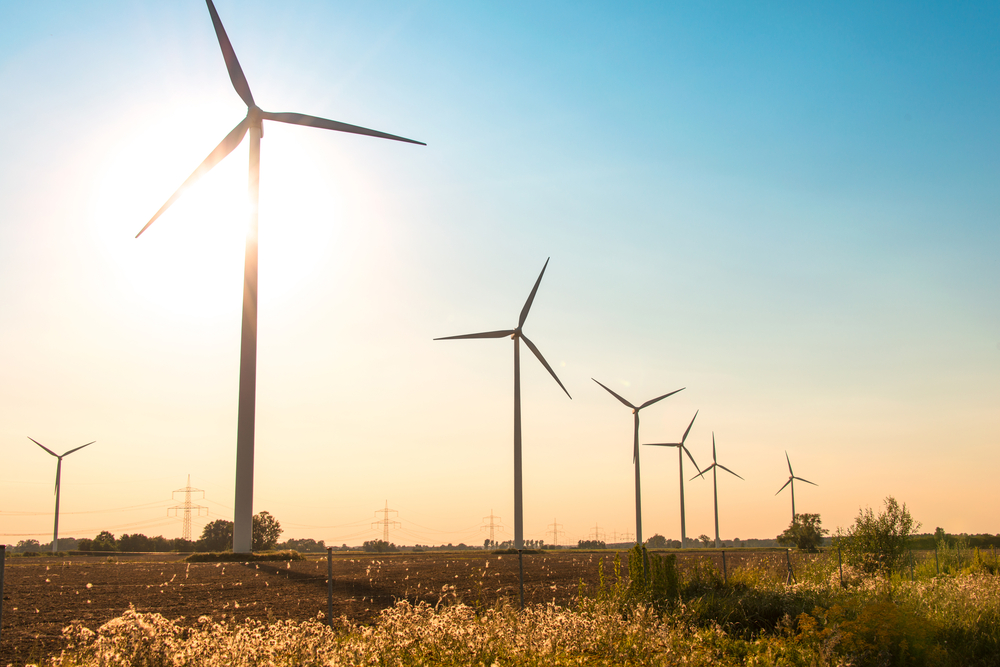This new wind farm is expected to start generating approximately 320,000 megawatt hours (MWh) of wind energy annually starting in May 2017, or enough to power more than 29,000 US homes[1] in a year. The energy generated will be delivered into the electrical grid that supplies both current and future AWS Cloud data centers.
In November 2014, AWS shared its long-term commitment to achieve 100 percent renewable energy usage for the global AWS infrastructure footprint. In April 2015, AWS announced that approximately 25 percent of the power consumed by its global infrastructure was from renewable energy sources with a goal of increasing that percentage to at least 40 percent by the end of 2016. As part of its renewable energy push, AWS continues to work on ways to increase the energy efficiency of its facilities and equipment, and to launch projects aimed at increasing the availability of renewable energy resources on the electrical grid that supplies power to current and future AWS Cloud data centers in Virginia and Ohio.
Specifically, in January 2015, Amazon announced a renewable project with the Amazon Wind Farm (Fowler Ridge) in Benton County, Indiana, which is expected to generate 500,000 MWh of wind power annually. In April 2015, Amazon announced a pilot of Tesla’s energy storage batteries that are designed to help bridge the gap between intermittent production, from sources like wind, and the datacenter’s constant power demand. Also in April 2015, AWS joined the American Council on Renewable Energy (ACORE) and the U.S. Partnership for Renewable Energy Finance (US PREF) to work with state and federal policymakers and other stakeholders to enable more renewable energy opportunities for cloud providers. In June 2015, the company announced Amazon Solar Farm US East in Virginia, which is expected to generate 170,000 MWh of solar power annually. In July 2015, AWS announced Amazon Wind Farm US East in North Carolina, which is expected to generate more than 670,000 MWh of energy annually.
Now with Amazon Wind Farm US Central announced today, Amazon’s renewable projects will be responsible for delivering more than 1.6 million MWh of additional renewable energy into electric grids across the central and eastern US, or roughly the equivalent amount of energy required to power 150,000 US homes.
“We continue to pursue projects that help to develop more renewable energy sources to the grids that power AWS datacenters and bring us closer to achieving our long term goal of powering our global infrastructure with 100 percent renewable energy,” said Jerry Hunter, Vice President of Infrastructure at Amazon Web Services. “Our previously announced renewable energy projects put AWS on track to surpass our goal of 40 percent renewable energy globally by the end of 2016. This latest project, Amazon Wind Farm US Central, pushes our renewable energy percentage ever higher?.”
“Ohio continues to benefit from the strong relationship that JobsOhio and its business development partners have fostered with Amazon,” said John Minor, President and Chief Investment Officer of JobsOhio. “Building upon news from earlier this year that AWS would develop cloud data centers in Ohio, we are excited that AWS is making another significant investment here and look forward to partnering with Amazon as it continues to grow in our state.”
EDP Renewables is a global leader in the renewable energy sector and the fourth largest producer of wind power in the world. The company operates in 12 markets around the world (Belgium, Brazil, Canada, Spain, United States, France, Italy, Poland, Portugal, United Kingdom, Romania and Mexico).
"We are very excited to be working with AWS on this important project in Ohio,” said Jo?o Manso Neto, CEO of EDP Renewables. “The fact that businesses such as AWS are playing such an active part in renewable energy projects is a very clear indicator that the future lies in additional generation of this type of energy. The support for this project shows the industry’s confidence in our delivery capacity, experience, and know-how."





